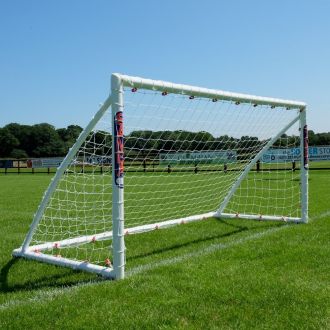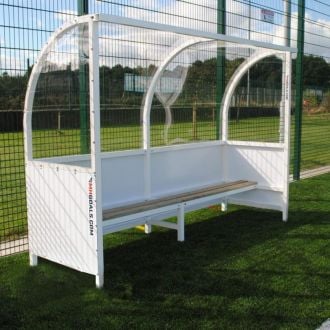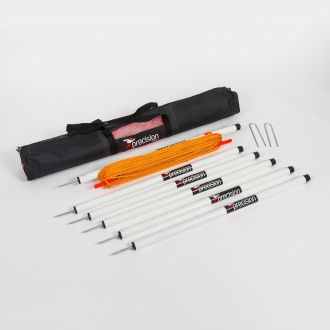How to Maintain a Football Pitch: A Guide for Grassroots Clubs
Money has never been tighter in grassroots football. Every penny counts, which makes maintaining pitches harder than ever.
While you might not be responsible for the overall upkeep of the grassroots football pitch you use, you should still be aware of the basic principles involved. You can then play your part, and help to keep your pitch as healthy as possible.
Pitches are being renovated across the UK right now. Money has been made available for the programme by the FA and the Football Foundation. But once a pitch has received a much-needed makeover, how is it kept in good condition?
A newly renovated football pitch is likely to be covered in seeds or sprouting grass. If this is the case on your pitch, you should do everything you can to allow the grass to mature.
Irrigation
Fortunately, water isn’t a scarce resource in the UK. But there may be dry spells during the course of a season — and that’s never good news for an overused pitch.
Irrigating a full-size football pitch is an expensive business. But any water you can muster is better than none at all.
After a hot day, try to give the pitch — at the very least — a light covering of freshwater. You can do this the hard way with handheld receptacles, but using a hose system or a dedicated sprinkler is the easiest method.
If you’re waiting for grass to germinate during hot spells, you’ll need quite a lot of water. Don’t be afraid to drench the grass — as long as you don’t have a match within 48 hours. And keep an eye on the weather. The worst thing you can do is flood a pitch that hasn’t had a chance to recover.
Cut Height
When grass is recovering, one of the worst things you can do is cut it too short. Even if sward appears, don’t panic. Let the grass grow to around 50mm before even thinking about cutting it. Most groundsmen aim for something close to 30mm, but this can differ depending on the coach’s preferred style of play.
Let your grass become strong and robust before cutting it to match length. While the pitch is in the recovery phase, use a rotary mower, as a cylinder mower might rip up the new blades of grass before they’ve had a chance to establish themselves.
Fertiliser
Fertiliser does a football pitch good throughout the year — but particularly during renovation. Assuming you used a fertiliser-treated seed, you won’t need any more fertiliser for a while. A summer sport fertiliser is perfect for recovering grass. Start applying it according to the supplier’s instructions once your new grass reaches around 10mm in height.
You’ll know your fertiliser is working by inspecting the pitch regularly. The tell-tale signs of a well-fertilized grass are thicker-than-usual sward and a dark green colour. Every time you apply the fertiliser, poke a few holes in the grass with a garden fork. This will allow it to travel down to the roots — making them stronger and more robust.
Ongoing Maintenance
It’s often difficult to find the right balance between grooming and giving the grass a chance to re-establish itself. To maintain healthy growth, brush and lightly spike the grass once a week. You should be able to start this process around four weeks after planting your new seeds.
Until the new growth has established itself, you should keep everyone off the pitch. In most cases, this takes between four and eight weeks.
Moving forward, it’s important to brush the grass on your pitch before cutting it. You can do this with a lawn multi-tool found in most DIY stores. If money is tight, a large outdoor sweeping brush might do the trick.
Spot-Checks After Matches
If possible, keep your pitch for matches only. But if you’re club is like most grassroots clubs these days, you’ll probably be training on your main pitch, too. While this isn’t ideal for the health of your pitch, you can provide a little protection with regular after-play inspections.
At the end of every match or training session, walk around the pitch and look for damage. Replace divots wherever you can, making sure you stamp them firmly back into place with your feet.
If you notice significant damage, make a note of it — and inform your groundsman as soon as possible. Vigilance and quick action is often the best way to ensure a pitch lasts an entire season. Leaving problem areas of your pitch to the elements can make things a lot worse.
The pitch is arguably — along with football equipment, footballs and football goals — any club’s most important asset. Look after it, and it will look after your team.





